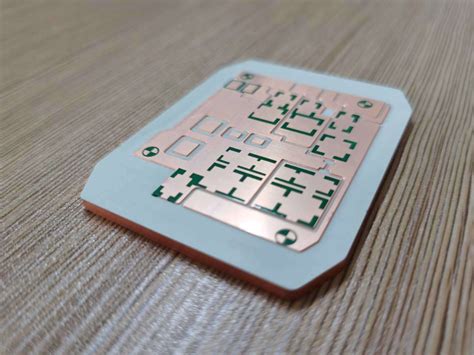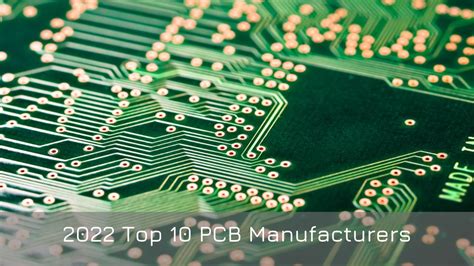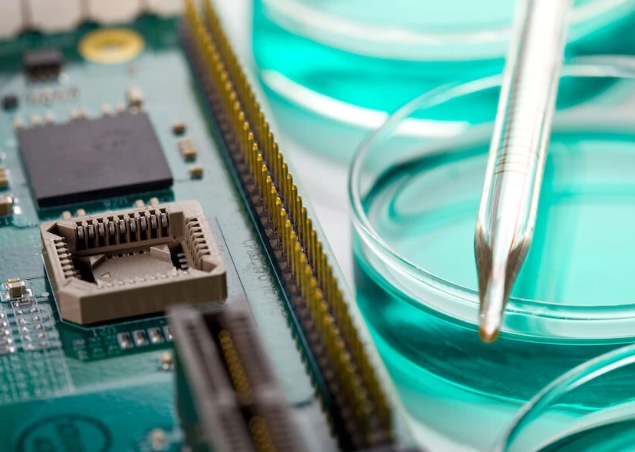Simplify Your Projects with an Easy PCB Maker: A Step-by-Step Guide
Key Takeaways
When embarking on your PCB manufacturing journey, it’s essential to grasp the fundamental principles that govern this process. Understanding the basics of PCB design not only enhances your skills but also enables you to communicate effectively with PCB manufacturing companies. As you select an easy PCB maker, consider its features and how they align with your project needs, as this can significantly affect your overall experience and project success.
One vital aspect to keep in mind is the PCB manufacturing cost. Different PCB manufacturing business models offer varying pricing structures, so it’s important to evaluate your budget against the features you require. A well-chosen easy PCB maker should help minimize costs by streamlining your design process, allowing for quicker iterations and less waste.
By integrating tips for enhancing your workflow in design and execution, you’ll find that each component of your project becomes easier to manage. Ultimately, avoiding common pitfalls will not only save you time and resources but also lead to higher quality results in your final products. This holistic understanding will serve as a strong foundation as you navigate the dynamic world of PCB design and manufacturing.
Understanding the Basics of PCB Design
When embarking on the journey of PCB manufacturing, it’s crucial to grasp the fundamental concepts that underpin the design process. You will encounter several essential elements, from schematic sketches to PCB layouts, that form the backbone of effective design. Understanding the difference between various PCB manufacturing companies will also play a vital role in selecting a partner who meets your specific needs.
To start, it’s important to familiarize yourself with basic terms such as trace width, spacing, and layer stack-up. Each of these elements influences not only your design but also impacts the ultimate PCB manufacturing cost. A well-thought-out layout helps in minimizing errors and cost overruns.
| Terminology | Description |
|---|---|
| Trace Width | The width of the electrical pathways on your board. |
| Spacing | The distance between traces that prevents electrical shorting. |
| Layer Stack-Up | Refers to how many layers are used in your PCB design. |
Furthermore, choosing an appropriate design software can dramatically influence efficiency in your projects. This software often feature tools to streamline the process from concept to physical creation, aligning with your vision and ensuring accuracy. As you delve deeper into the realm of PCB design, consider how each decision impacts overall performance and reliability, which is critical for any pcb manufacturing business.
Ultimately, arming yourself with knowledge about standards and best practices will help you navigate potential challenges more smoothly—offering pathways for improvement with each project you undertake.
Choosing the Right Easy PCB Maker
When selecting an easy PCB maker, you should focus on several key factors that can greatly influence the pcb manufacturing process. First, consider the capabilities of the tool. An ideal PCB maker should offer an intuitive interface that allows you to layout your designs easily while accommodating various pcb manufacturing costs. It’s essential to also evaluate the software’s compatibility with popular design files, ensuring it integrates well with standard formats used by pcb manufacturing companies.
Another critical aspect is the level of support provided by the manufacturer. Choose a tool that offers not just tutorials but also access to a community of users and resources for troubleshooting. This is especially beneficial if you’re venturing into the pcb manufacturing business, where insights from experienced users can help avoid common pitfalls.
Lastly, think about future scalability. As your projects grow in complexity, you’ll want a PCB maker that adapts accordingly without having to invest in entirely new systems. Whether you’re making simple circuits or tackling more intricate designs, a versatile and easy-to-use PCB maker can be an excellent ally in achieving high-quality results with efficiency while keeping costs manageable within your budget.
Essential Tools for Efficient PCB Layouts
When embarking on your journey into PCB manufacturing, having the right tools can significantly streamline your design process. To achieve efficient and high-quality PCB layouts, you’ll first need to equip yourself with a reliable PCB design software. Look for options that facilitate intuitive design interfaces, allowing for ease of use even if you’re a beginner. Additionally, tools that offer integrated libraries of standard components can save you time during the layout phase.
Another crucial component is a good CAD tool. These tools specialize in translating your design into an electronic format that can be understood by PCB manufacturing companies. If you’re aiming to balance quality with budget, consider exploring various options and comparing their pricing models; you’ll want to grasp the PCB manufacturing cost implications based on your specific requirements.
Don’t underestimate the importance of a reliable design rule checker (DRC)—this tool helps catch errors early in the process, ultimately reducing costly mistakes during the PCB manufacturing business phase. Moreover, investing in a good quality soldering station can make a significant difference when assembling your boards.
“Always prioritize tools that enhance collaboration and documentation as these elements can considerably simplify future projects and revisions.”
By leveraging these essential tools, you will streamline both your workflow and the transition from design to production, bringing you one step closer to successfully launching your PCB projects.
Step-by-Step Guide to Designing Your PCB
When embarking on a PCB design project, the first essential step is understanding the intricacies of pcb manufacturing. This process involves several stages, from initial concept to producing functional prototypes. You should start by defining your layout requirements and circuit schematics, which are crucial for avoiding design errors down the line. The next step involves selecting an appropriate easy PCB maker that meets the specifications needed for your project. By choosing a reputable manufacturer from among various pcb manufacturing companies, you can ensure that your boards are made with precision and reliability.
Once you’ve settled on a manufacturer, evaluate your expected pcb manufacturing cost to align your budget accordingly. This is particularly important if you’re considering scaling up to a pcb manufacturing business in the future, as quality and cost control will play pivotal roles in your success. After finalizing the design layout using intuitive software tools, you’ll be ready to proceed with fabricating the PCB. Make sure you incorporate essential features such as clear routing paths and appropriate component placements to enhance functionality while adhering to industry standards.
In this phase, it’s vital to test and iterate upon your designs rigorously. Each revision brings you closer to achieving an optimal layout that meets performance expectations while keeping production expenses manageable. Following these detailed steps will not only simplify the crafting of your PCB but also harness quality outputs that elevate your projects’ outcomes significantly.
Tips for Streamlining Your Design Process
Streamlining your design process can be pivotal to achieving efficient and high-quality PCB layouts. Start by familiarizing yourself with the fundamental principles of pcb manufacturing. A clear understanding of the design rules, such as trace width and clearance, is essential. You should also explore various pcb manufacturing companies, as their capabilities can significantly influence the outcome of your project. Selecting an easy PCB maker can greatly reduce the complexities you may face, allowing for quicker iterations and refinements.
In your design process, utilize software tools that enhance workflow automation. Features like real-time DRC (Design Rule Checking) can help catch errors early, minimizing any potential setbacks that could affect your overall pcb manufacturing cost. By opting for intuitive interfaces and efficient routing algorithms, you can simplify even the most intricate designs.
Engaging in collaborative projects or using cloud-based platforms allows you to share ideas and receive feedback quickly. This not only helps in refining your designs but also lowers the risk of miscommunication during production phases with your chosen pcb manufacturing business. Ultimately, establishing a streamlined process will empower you to focus on creativity while reducing time spent on repetitive tasks.
Common Mistakes to Avoid in PCB Making
When venturing into PCB manufacturing, it’s essential to recognize the common pitfalls that can hinder your success. One prevalent mistake is skimping on selecting the right PCB manufacturing companies. Choosing a provider without thoroughly evaluating their capabilities can lead to inferior quality, resulting in unforeseen costs and delays in your projects. It’s also vital to understand that overlooking the PCB manufacturing cost can disrupt your budget—always factor in all expenses, including materials and labor, to prevent financial strain on your PCB manufacturing business. Additionally, a lack of attention to detail during the design phase can cause issues later in the manufacturing process; ensuring precise layout and component placement can save both time and resources. Avoiding these mistakes will not only streamline your design process but also elevate the overall quality of your PCBs, leading to more successful project outcomes. Paying close attention at each stage will enhance your experience in the PCB landscape significantly.
Testing and Validating Your PCB Design
Once you have completed your PCB layout, it is crucial to enter the testing and validation phase of your design. This step ensures that your final product functions as intended before proceeding to pcb manufacturing. Begin by utilizing simulation software to test the functionality of your design virtually; this can help you identify any errors in the circuit before committing to physical production. Next, once your design is fabricated by reputable pcb manufacturing companies, perform real-world tests. Check for signal integrity, power distribution, and thermal performance, as these aspects are essential for a reliable product.
Additionally, validating the pcb manufacturing cost against your project budget is vital. You want to ensure that the materials and processes used align with your financial goals without sacrificing quality. Be prepared to iterate; often, minor adjustments in design can lead to significant improvements in functionality and cost-efficiency in your pcb manufacturing business.
By rigorously testing and validating each component of your PCB design, you set the stage for successful production while minimizing potential costs and time delays associated with redesigns or repairs later in the process. Ultimately, this diligent approach not only enhances reliability but also helps maintain a competitive edge in the ever-evolving landscape of electronic development.
Resources for Continuous Learning and Support
To truly excel in PCB manufacturing, it’s essential to leverage various resources that offer ongoing education and assistance. Numerous online platforms and forums cater to those interested in the world of PCB manufacturing companies, where you can interact with experts and fellow enthusiasts. Websites like industry-specific blogs, YouTube channels, and webinar series are fantastic ways to gain insights into advanced techniques and emerging trends in the field. You might also want to explore online courses that cover everything from the basics of PCB design to specific aspects like PCB manufacturing cost analysis, ensuring you stay competitive in your PCB manufacturing business. Additionally, joining local maker spaces or engineering clubs can provide hands-on experience and networking opportunities. Don’t forget to check out industry expos and trade shows, where you can connect directly with PCB manufacturing companies showcasing their latest innovations. Continuous learning not only improves your skills but also helps you build valuable relationships within the community, ultimately enhancing your overall capabilities in PCB projects.
Conclusion
In today’s fast-paced world of PCB manufacturing, having access to an easy PCB maker can significantly enhance your productivity and creativity. By understanding the fundamentals of pcb manufacturing, you position yourself to efficiently manage your projects from concept to completion. It’s essential to select the right tools and software that not only cater to your design needs but also align well with the pcb manufacturing companies available in the market. This approach ensures you can streamline your design process, effectively reduce pcb manufacturing costs, and refine your technique for producing better layouts. Remember, avoiding common pitfalls in the realm of PCB making will not only save time but also enhance the quality of your final product, supporting a successful pcb manufacturing business. By continuously improving and utilizing the right resources, you’ll find that your projects become simpler and more rewarding. Embrace this opportunity to expand your skills and achieve outstanding results in all of your future designs.
FAQs
What is PCB manufacturing?
PCB manufacturing refers to the process of creating printed circuit boards, which are essential components in electronic devices. This includes designing circuit layouts, etching, and assembling various electronic elements.
How do I choose the right PCB manufacturing company?
When selecting from various PCB manufacturing companies, consider factors such as their reputation, quality of work, customer support, and pricing options. Reviews and recommendations can also guide you in making the right choice.
What is the typical cost of PCB manufacturing?
The pcb manufacturing cost can vary significantly based on factors like complexity of design, size, quantity, and materials used. To better estimate your budget, gather quotes from several providers for comparison.
Can I start my own PCB manufacturing business?
Yes, starting a pcb manufacturing business can be a viable venture if you have a solid understanding of electronics design and production processes. It’s crucial to research market demand and establish relationships with suppliers to succeed.
What common mistakes should I avoid in PCB design?
Common mistakes include inadequate trace width for current capacity, overlooking thermal issues, and not designing for manufacturability. Always ensure your designs undergo thorough review before initiating production.







